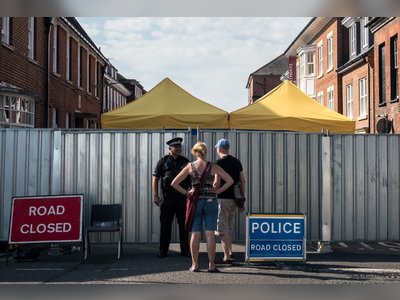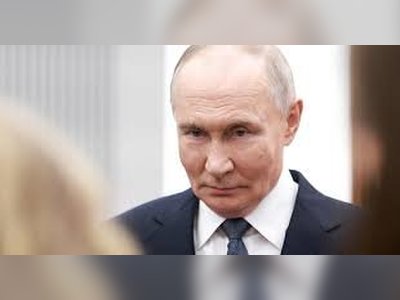Can Kai Tak, Hong Kong’s former airport, take off as the city’s second business district?
A monorail network with 12 stations linking the former airport’s runway precinct with neighbouring Kwun Tong and Kowloon Bay remains on paper, as the commencement of construction planned for 2018 is stuck midway in a three-stage public consultation process that has lasted a decade.
“The vision is good”, but the “execution of the plan might have been mishandled”, said He Huahan, a district councillor who some times advises Hong Kong’s government on public facilities in the Kai Tak South area.
“Related amenities and facilities are still not in place, including the Sha Tin-Central link, while the consultation for the construction of the monorail has taken more than 10 years.”
If Kai Tak’s past was a showcase of Hong Kong’s can-do spirit and entrepreneurship, its present reflects some of the problems that ail the city, rendering its future in doubt.
Kai Tak, which served Hong Kong for more than seven decades until 1998 as the city’s sole civilian airport, got its name from a failed real estate project by two local businessmen, Ho Kai and Au Tak, in the 1920s, who had sought to build mansions on a plot of reclaimed land.
At the behest of American aviator Harry Abbott, the then British colonial government turned the reclaimed plot into an airfield with a grass strip runway in 1924, where Abbott set up his flying school.
The early airfield served as the Far East destination for the then Imperial Airline (now British Airways), and Pan Am’s Hong Kong Clipper service from San Francisco. The airport was expanded using prisoner-of-war labour by the occupying Japanese forces during the second world war.
A plan to expand Kai Tak’s usage as an international airport began in 1954, and a 3,390 metre (11,130 feet) runway was reclaimed from Victoria Harbour in 1974, where it still stands.
Located minutes from bustling Kowloon, it did not take long for real estate development to encircle the airport, making Kai Tak one of the most challenging airstrips for landing a plane. Commercial flights had to fly so low over apartment buildings that passengers could spot local residents going about their daily lives.
Ken Chan remembers living along Nga Tsin Wai Road in Kowloon City, where he spent more than two decades before emigrating to Sydney in 1991.
“I recall planes flying over our home every five minutes,” Chan said in a recent interview. “Was it noisy? Of course it was, but I got used to it and we simply spoke with each other at the top of our voices each time a plane passed by our home.”
By the 1980s, Hong Kong’s economy was booming alongside the other three “Tiger” economies of Asia – Taiwan, South Korea and Singapore. Kai Tak’s capacity was quickly exhausted and the colonial government began planning a relocation. In 1998, soon after the city was returned to China, Hong Kong’s airport moved to its present location, at Chek Lap Kok on Lantau Island.
And it was in 2012 that Donald Tsang, Hong Kong’s then chief executive, unveiled a plan to redevelop the former airport and its runway.
In the 2011-12 Policy Address, the Hong Kong government revealed a plan to transform an area that comprises Kai Tak, as well as parts of Kowloon Bay and Kwun Tong, into the city’s second business district.
According to the plan, about 134,000 residents were to live in 49,900 apartments. The residential gross floor area would amount to 2.9 square kilometre (290 hectares) – twice the size of Taikoo Shing. The area was also expected to provide 99,000 jobs, in a commercial gross floor area of 2.28 square kilometres.
So far only 5 per cent, or 16.2 hectares, of the 323-hectare site covered by the Kai Tak redevelopment plan has been allocated for commercial use. Another 13 per cent, or 42 hectares, has been allocated for residential projects. As much as 30 per cent, or about 98 hectares, has been left as open space.
Land sales at Kai Tak, which started in 2013, have contributed HK$173 billion (US$22.1 billion) to government coffers so far, according to Bloomberg, which cited data from real estate services provider Savills. The remaining land could fetch another HK$98 billion, according to Knight Frank, another property consultancy.
But slow progress in infrastructure development could stall the ambitious project.
He, the district councillor for Kai Tak South, said Kai Tak’s redevelopment would “definitely” be deferred. “Everyone has hopes for it … The vision it offered everyone is very good,” he said.
But construction on the monorail system, called the Environmentally Friendly Linkage System, which was expected to get underway last year, has yet to start. Only the first stage of a feasibility study has been completed, with an interim public consultation still in progress, according to the project’s official website.
Lawrence Wan, senior director at CBRE, said Kai Tak will not become Hong Kong’s second business district without sufficient transport links.
“The monorail has to be done. Otherwise, just the runway may mean a walk equivalent to that from Causeway Bay to Wan Chai,” Wan said. “In the summer, it gets exceptionally hot. The monorail can also ease traffic and divert passengers, instead of them just relying on buses and taxis.”
He said the government needed to think of how it could make the district more convenient for users.
“How has Central stood for so many years? It is because its [transport] amenities are really good. Just two stops and you’re in Kowloon. A ferry ride and you’re in Tsim Sha Tsui,” Wan said.
“Office [buildings in Central] are connected by footbridges. People do not need to walk the streets. Of course, it is because Hongkong Land is the major landlord. Kowloon Bay also needs [footbridges]. It is really convenient.
“We do not need to worry about the rain when going for a meeting in Central,” he said.
Wan added that Kai Tak would definitely take 10-20 years to mature. “It may not yield [profits] within a couple of years, but within 10 years, we can see some results.”
He pointed out some limitations developers faced in Kai Tak, such as offices here could not be sold in strata titles, as well as height restrictions. But Wan said pre-leasing of two commercial projects at the site by Nan Fung Development and Lifestyle International was likely to start by the end of this year or the beginning of 2020.
Terry Poon Fuk-chuen, chief financial officer at Lifestyle International, which operates the Sogo department stores in Causeway Bay and Tsim Sha Tsui, said the company was not worried about delays despite the forfeiture of two commercial plots on the runway.
“Those two parcels are at the end of the runway, near the cruise terminal,” Poon said. “But our parcel, bought at the end of 2016, is not on that side.
“Even if the Sha Tin-Central Link is delayed, it will not be delayed forever, right? It will open one day,” he said. “Provided that it opens, there is no impact on us. I just think the government has to work on the runway side.”
Lifestyle International will develop a commercial complex with two 18-storey towers on its plot of land. The complex, with a gross floor area of up to 1.1 million sq ft, will be completed between September 2020 and the second quarter of 2022, depending on whether there are any unexpected delays, Poon said.
One of the towers could be developed into a regional mall with entertainment and dining facilities, while the other could be grade A offices.
The site is close to the proposed Kai Tak Station on the Sha Tin-Central link. The Lands Department awarded the land to Lifestyle International for HK$7.39 billion, or HK$6,733 per square foot, in November 2016, in what was the highest price for a government commercial site at the time.
Poon said the lack of amenities on the runway site was to blame for the forfeitures. “On that side, in fact, amenities are not yet there [at all]. Everyone can see it,” Poon said. “That is why a parcel was withdrawn from sale. For that parcel, so far everyone thinks, it is not ready yet.”
He said developers would price in the lack of transport amenities when bidding for the parcel. Poon was, on the whole, optimistic about the area.
“On the runway side, the residential parcels have sold pretty well. Sooner or later, the amenities will be done,” Poon said. “The government still has a lot of land here. If it does not speed up [infrastructure development], how can it sell the land? How can the price be good?”
The plots sold so far, to Nan Fung in May 2017 for HK$24.6 billion, and to Sun Hung Kai Properties a year later for HK$25.1 billion, have all set records for Hong Kong.
The building Ken Chan lived in on Nga Tsin Wai Road has not been bulldozed yet, but the area has changed dramatically otherwise.
“I miss the snacks – like fried beef buds – that I used to buy before going to school. I don’t see those small stores any more,” he said.














